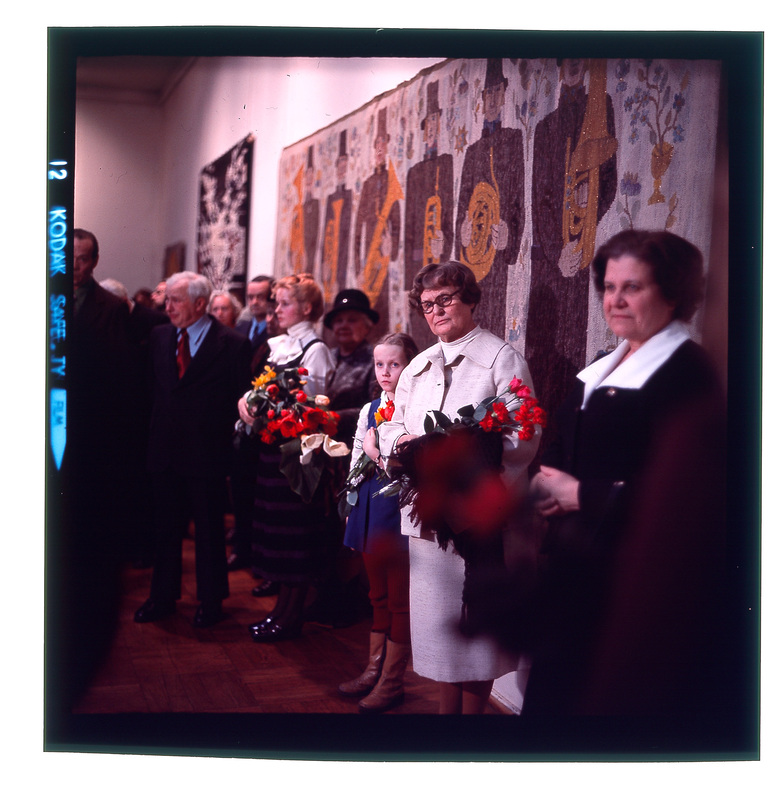Currently open
Elgi Reemets ‘Väägvere choir, 1839’
20.06.-1.09.2025
Permanent exhibition "Collected Works"

Elgi Reemets’s monumental 5 metre wide woven tapestry ‘Väägvere choir’ occupies a unique place in Estonian cultural history. It is one of the best-known works of textile art in the collective memory of Estonians.
This carpet was one of the central moments in the legendary comedy film “Young Pensioner” (directed by Sulev Nõmmik), which was screened in 1972. The tapestry depicting Väägvere’s trumpet choir became emblematic in the scene where the leading characters are at the 1971 Applied Arts exhibition in Tallinn Art Hall. They are constantly pestered by an elderly lady, whose phrase “We are ready to listen to the comrade art historian for hours” has become a catchphrase, as has the subsequent question referring to Reemets’ carpet: “Pardon. Pardon me, but I am a great art admirer. I’m a bit colour-blind, but you know, can you tell me if this little carpet will fit over my baldachin bed?”
The trumpet choir, founded in 1839 in Väägvere, is known to be the first Estonian brass orchestra. Between 1851 and 1912, the orchestra was led by David Otto Wirkhaus, and they won first prize at the first Estonian song festival in 1869. The Väägvere Choir is still active today.
Elgi Reemets (1910-1987) was one of the most versatile Estonian applied artists, impossible to define in terms of a single discipline. She created both unique works of art and for serial production for the art product factory in Tallinn. Her amplitude ranges from ceramics and leatherwork to metal, textiles and woodwork. The depiction and interpretation of ethnographic heritage has become a leitmotif of Reemets’ work. The world she chose to depict was, at the time of his work, safe and simple. With masterly dexterity, she moved from depictions of obligatory motifs to reflections of ethnic themes, while remaining benevolent and humorous.
The Väägvere Choir is Reemets’ most monumental textile work, depicting six standing male figures, grandiose and expressive in spite of their generality, whose static appearance is enlivened by the placement of their brass instruments and the choice of shimmering material. The floral details, cups and a petroleum lamp in the background link the depicted men to their time and environment and are a good example of Reemets’ ability to weave ethnographic and cultural heritage with warm humour.